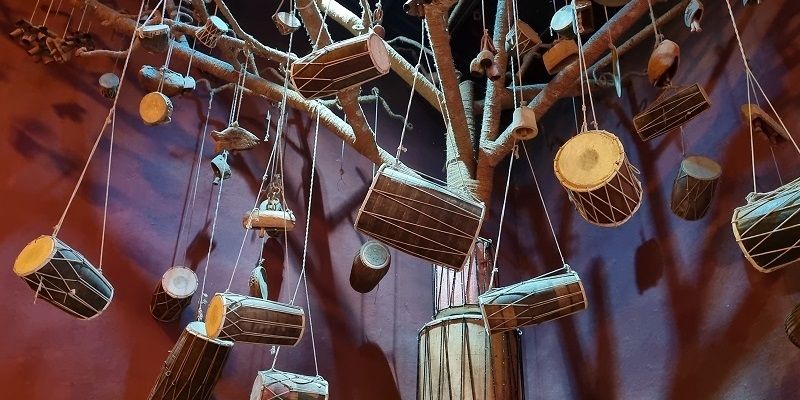Heritage, art, design: Madhya Pradesh Tribal Museum inspires audiences with immersive experiences
By Madanmohan Rao
Copyright yourstory

Launched in 2014, PhotoSparks is a weekly feature from YourStory, with photographs that celebrate the spirit of creativity and innovation. In the earlier 910 posts, we featured an art festival, cartoon gallery. world music festival, telecom expo, millets fair, climate change expo, wildlife conference, startup festival, Diwali rangoli, and jazz festival.
Located in Bhopal, the Madhya Pradesh Tribal Museum is more than a museum of artefacts: it is a cultural journey. The spectacular design and exhibits bring alive the homes, rituals, myths, games, and spirituality of tribal communities (see also our photo essay on the State Museum next door).
In addition to aesthetic delight, the Tribal Museum conveys a deeper understanding of the diversity among the tribes of central India. A day or half a day in the museum is a highly rewarding experience for those interested in culture, anthropology, crafts, art—or simply curious about how traditional communities live with nature.
Opened to the public in 2013, the museum aims to preserve, promote and celebrate the cultural heritage of the tribal communities of Madhya Pradesh. Beyond a repository of artefacts, it is positioned as a vibrant immersive experience of tribal life, indigenous knowledge systems, aesthetics, and beliefs.
Designed by architect Revathi Kamath, the museum is spread over seven acres of land. Built on natural topography, the terrain is uneven, but the architecture and landscape make use of the contours. This gives it an earthy feel, giving a sense of what tribal dwellings might actually have felt like.
The design of the buildings, interiors and galleries aims to evoke tribal aesthetic sensibilities. Natural materials such as mud, bamboo, grass, and dung are used, and there are replicas or full‐scale models of homes.
The museum is organised into six major galleries, each focusing on different dimensions of tribal life. For example, Jeevan Shaili has full-size models of tribal houses of Gond, Korku, Bhil, and Sahariya communities. Daily‐use tools are on display, such as agricultural implements and earthenware.
The gallery on Sanskritik Vaividhya (cultural diversity) depicts traditions such as weddings, festivals, and other rituals. The art installations include wedding canopies, musical instruments, procession elements, and the like.
Spiritual beliefs and myths of tribal communities are captured in the gallery called Devlok (spiritual world). It depicts deities, rituals, folklore, and even the afterlife, via terracotta sculptures, shrines, prayer posts, and tools of worship.
The gallery Chhattisgarh Dirgha is dedicated to the tribal culture of the neighbouring state Chhattisgarh. Both Madhya Pradesh and Chhattisgarh share tribal populations and major cultural influences.
Younger audiences will be attracted to the games in the Rakku Dirgha. The toys and local games include amazing life-size representations, and visiting children seem to blend immersively with those represented in the life-like installations.
Some sections of the museum are designed not just to‘look’ at but also to ‘touch’. For example, visitors can enter models of tribal homes to get a sense of the space and design. There are also digital tours and audio guides activated by QR codes in English and Hindi.
The large amphitheatre hosts cultural performances, folk dance, plays, and music concerts. A well-stocked merchandise shop sells handicrafts and artefacts that showcase the work of local tribal artists, along with live demonstrations.
In sum, the Tribal Museum is a must-visit not just for cultural aficionados and educators, but also media and the general public. Through multi-dimensional and multimedia experiences, it preserves the intangible heritage of tribes and promotes respect, dignity and harmony in society.
Now, what have you done today to pause in your busy schedule and harness your creative side for a better world?
(All photographs taken by Madanmohan Rao on location at the Tribal Museum.)
(Edited by Kanishk Singh)



